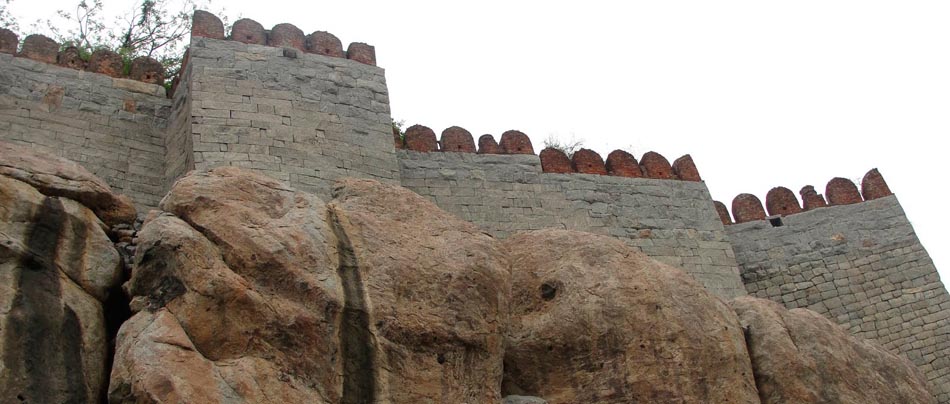 |
|
|
 |
|
|
| History Gingee | Rajagiri Fort | Krishnagiri Fort | Kalyana Mahal |
| Sri Ranganatha Temple | Gate way of Pondicherry | Venkatramana Temple | Gingee Hotels |
 Advertise here |
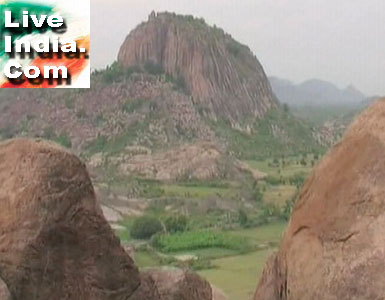 |
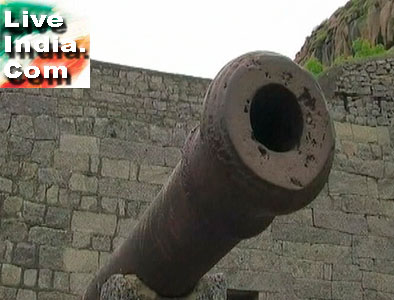 |
| Gingee
in Puducherry is one of the finest forts in South India. Its origin
dates back to the 9th century when it was a stronghold of the Cholas but
the fort as it looks today is the handiwork of the Vijaynagara kings who
made it an impregnable citadel. The fortified city is built on the seven
hills, the most prominent of which are Krishnagiri, Chandragiri and Rajagiri.
Surrounded by high walls, it was so strategically planned as to make enemies think twice before they attacked. Strongly guarded by a triple gate beyond which lay equally heavily guarded courts, the summit of the Rajagiri could not have been easily attained by any of the enemies. Today, the summit can be reached after a two hour climb, still a strenuous task, but well worth the effort. A place of great historic interest, Gingee, no longer an unsurmountable citadel, is one of the most interesting centres on the Tamil Nadu tourist circuit. Though the construction of the hill fort at Gingee is traditionally ascribed to one Anada Kon, a local chief, it came into prominence with the rise of Nayakas of Gingee in early 17th century. The Muslim sultans of Bijapur, the Moguls, the Marathas are always recognised the strategic importance of the fort and everybody always fought hard to retain the fort. So much so, the vision of Sivaji, the great Maratha warrior became true, as Gingee was the seat of Maratha power for few months when Rajaram fled to Maharashtra in the wars with the Moguls. The outer fortification of Gingee runs in a triangular form over the three prominent hillock viz. Rajagiri, Krishnagiri and the Chakklidurg and the intervening spaces. The fortification is about 13 km in length and the fort covers an area of about 11 sq.km. There are two prominent gateways viz. the Arcot and Pondicherry gates. The ancient city was located in the intervening space. The inner fortification runs around the royal buildings located at the foot and upon the prominent Rajagiri hillock. Important among the royal buildings are the Kalyana Mahal, the rows of enclosure for the royal staff (wrongly named horse stables) the huge granaries (wrongly named Gymnasium) besides the remains of the rulers exclusive quarters, King's audience hall and the private chambers for holding meetings of council of ministers, a palace complex, a massive tank called Elephants' tank, all located at the foot of the hillock. The remains like pleasure pavilions and the Krishna temple atop the Krishnagiri are also equally royal in nature. Kalyana Mahal is a pleasure pavilion of seven stories. There is a stepped tank with fountains set in the masonry of the steps. The tank was possibly fed by a system of conduits and excess water from the rains. There is a spiral staircase running along the masonry of inner hall. The Inner hall in all the stories has an open veranda on all sides. The private quarter of the ruler has a hall at the centre surrounded smaller rooms and provided with a private toilet. There is a spiral staircase to climb down to the Audience Hall. The Audience Hall has a square area marked by a high and ornate platform with bold traditional temple-type mouldings. There is a massive stone backrest. There are tied platform for the courtiers to assemble. Upon the hillock are minor chains of fortifications. There is shrine for Kamalakkanai amman, the guardian goddesses of the place. Atop is granary, magazine, bastion with guns and temple. The whole layout of inner
fortification was so well laid out taking into consideration of needs of
the occupants including security and sustainability in the event of protracted
siege.
Open from 9.00 am to 5.30
pm
Citizens of India and visitors of SAARC (Bangladesh, Nepal, Bhutan, Sri Lanka, Pakistan, Maldives and Afghanistan) and BIMSTEC Countries (Bangladesh, Nepal, Bhutan, Sri Lanka, Thailand and Myanmar) - Rs. 5 per head. Others:
(Free entry to children up to 15 years) Important Phone Numbers STD Code 04145 PIN Code - 604202 Govt Hospital -222015 Fire Service - 222074 Taluk Office - 222007 Police Station/Office - 222004 DSP - 222101 All Women Police Station - 224005 Panchayat Union commissioner - 222011 Note: These information is subject to change according to Govt orders from time to time |
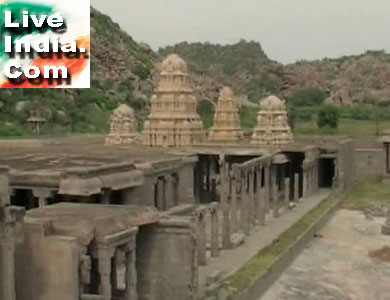 |
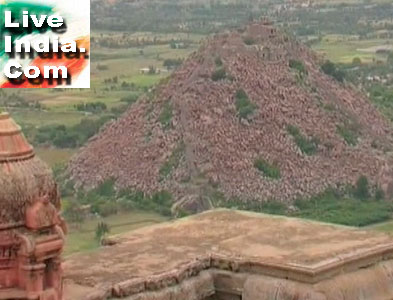 |
| History Gingee | Rajagiri Fort | Krishnagiri Fort | Kalyana Mahal |
| Sri Ranganatha Temple | Gate way of Pondicherry | Venkatramana Temple | Gingee Hotels |
| The
lower fort consists of the following important monuments:
* Vellore
Gate
The inner fort consists of the following important buildings: * Kalyana
Mahal, perhaps the living quarters of the queens.
There is a site museum at the entrance of the fort set up by the Archeological Survey of India containing sculptures pertaining to various periods and many dynasties that ruled Gingee. There are also guns and cannon balls made of stone, strewn about the fort. In order to reach the top one has to undertake a trek for over an hour. School children love to trek to Gingee Fort. |
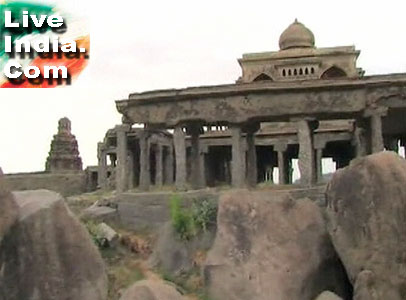 |
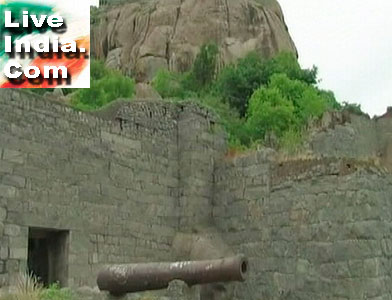 |
|
Live Video Gingee Fort |
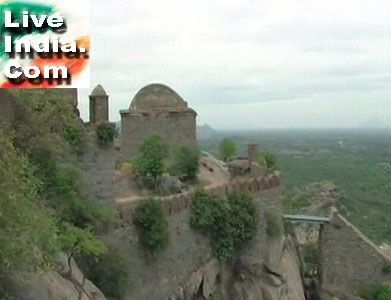 |
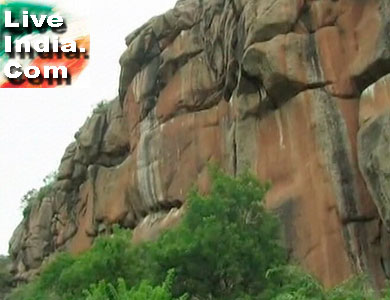 |
| History Gingee | Rajagiri Fort | Krishnagiri Fort | Kalyana Mahal |
| Sri Ranganatha Temple | Gate way of Pondicherry | Venkatramana Temple | Gingee Hotels |
 |
 |
|
| Privacy Policy for LiveIndia.Com |
|
|